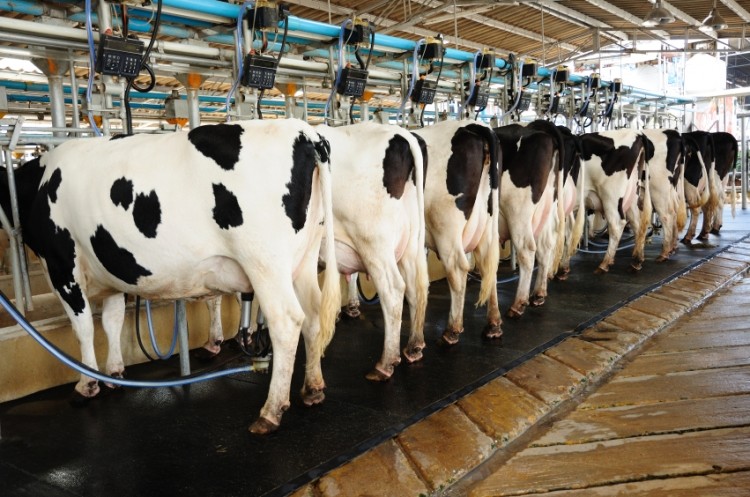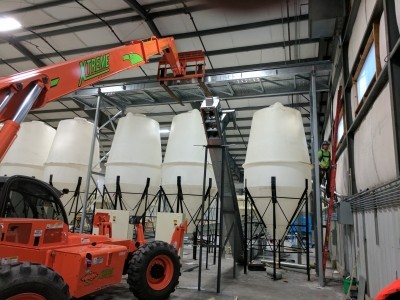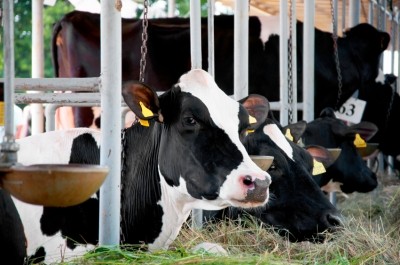Special Edition: livestock production and feed consumption trends
US dairy sector dampened by export downturn but industry expansion forecast for 2016

As the US emerges as a member of the international dairy market, global demand will continue to play a driving role in growth, said Shayle Shagam, livestock, poultry and dairy analyst for the World Agricultural Outlook Board at the US Department of Agriculture (USDA).
“There is a surplus of dairy products on the world market due to lower imports by Russia and China; this has had a price depressing effect on international products,” he said. “From the US standpoint the effect of these lower prices is exacerbated by the strength of the US dollar which makes us less competitive in international markets.”
However, domestic demand has supported higher prices for some dairy commodities, like butter, he said.
Feed influences
Along with the import and export markets, prices of feed and feed ingredients like hay, corn and soybean meal also can influence dairy economics, said Shagam.
“The availability of hay, especially high quality hay is an important component affecting the level of milk production on a per cow basis,” he said. “To the extent that feed and forage prices have declined, producers are able to feed higher-quality rations which in turn supports higher milk production.”
Improved producer margins starting at the end of 2013, may be leading to some herd growth, he said. But the margins have improved from both the lower feed costs and higher milk prices.
However, the influences may not be consistent across the country as drought conditions in areas like the southwest and western US have made feed more expensive in those areas, he said.
“The impact of the drought on California is apparent, milk per cow in California, the largest milk producing state, has been below year-earlier through August this year,” he added.
Dairy performance at state level
At the state level, many producers are seeing versions of the national trend with increased stocks and decreased prices, said several industry experts.
However, there are some changes in production said Brian Gould, Wisconsin Center for Dairy Research and professor in the department of agriculture and applied economics at the with the University of Wisconsin.
In month to month comparisons of September 2014 to 2015, milk production in Wisconsin has gone up about 3%, while it has dropped about 3.6% in California, he said.
In California, the drought has created some feed availability problems for producers, said Leslie Butler, professor in the agricultural and resource and economics department and extension specialist at the University of California, Davis.
“We generally grow about 70% of our alfalfa and that’s down, so we’re importing alfalfa from nearby states,” he said. “And, when you have to truck that in it puts the price up a little higher than you would normally see in California.”
However, the price of other feed ingredients, like soy, wheat, oats and barley is down and helping to offset some of the cost, he said.
“You’re looking at a bit of a squeeze on the dairy farms,” Butler said. “They try to get as much milk as they can out of their cows [and] a lot of producers are getting rid of more cows than they usually do.”
Previously, farms had been expanding, but lower producing cows are being culled this year, he added.
Producers in Idaho enjoyed a year of record high milk prices combined with low feed costs last year, said Joseph Dalton, associate professor in the department of animal and veterinary science and extension dairy specialist at the University of Idaho. But, producers in the state aren’t seeing the same trend this year.
Across the state, dairy herds are staying relatively consistent and new dairies aren’t being built, he said. “What we’ve done is focus on becoming more efficient in all areas,” he added.
Additionally, one long-term trend producers in the state have embraced has been the transition toward growing more of their own feed, Dalton said. The move helps producers control more of their costs.
“More producers are producing or farming a higher percentage of their forages than they did 10-15 years ago,” he said.
“It remains a vibrant industry and an industry that has adapted to changes,” he added.“It’s evident that the industry has weathered storms because we’ve not decreased the number of cows, or the standing in US production.”
In Pennsylvania producers have also been concerned with low milk income and the cost of production, said Virginia Ishler, a dairy extension specialist with Penn State University.
“We’re still dealing with somewhat high feed costs, corn is low, but soy is on the high side, so feed costs are still an issue,” she said. “When you look at the farms we work with, the breakeven is averaging about $19 per hundredweight, so currently our milk prices have been $17-$18 a hundredweight, so a lot of them aren’t breaking even.”
However, she said that the challenges facing dairy producers in Pennsylvania are similar to what is being experienced in other states.
“We’re still in a three year cycle – a good year, a mediocre year, and a bad year, so it’s just frustrating with all the money saved last year,” Ishler said. “Some folks have exhausted through that surplus that they were able to save and if this goes on through 2016, it puts more stress on the viability of the dairy business.”
Long term trends
Despite current weaker returns on milk and other dairy products, the long-term trend for the industry is expected to be an expansion in production, said Shagam. Herds are not expected to grow in number of cows, but are expected to see an increase in production per cow.
“Over the long term global demand growth is expected to increase demand for US dairy exports,” he said. “Domestic use is also expected to increase.”
The US Department of Agriculture (USDA) us also is expecting to see a drop in imports in 2016 in relation to the levels from 2015 and for there to be a pickup in exports, he said.
“Given expectations of increased US dairy production next year, we expect to see lower domestic prices for cheese, butter and whey in 2016,” he said. “However, given a recovery in world skim milk powder prices in international markets, it is likely non-fat dry milk (NDM) prices will increase.”



![[pic: (c) istock.com]](/var/wrbm_gb_food_pharma/storage/images/_aliases/wrbm_medium/1/5/9/0/1190951-1-eng-GB/Bacillus-based-feed-additive-may-improve-dairy-milk-efficiency-boost-health.jpg)




